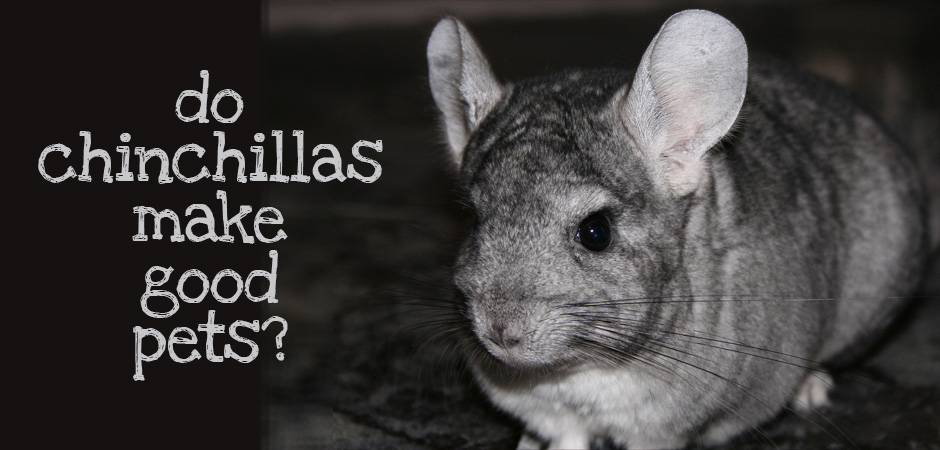A chinchilla
Will kill ya
If it’s mad;
Or if you are nasty
And treat it real bad.
So if a chinchilla
Is chinchilling you
Always be nice
And it will be too.Poem by Rachel Banks, reprinted from Robert Munsch’s website.
The young author of this poem has a pet chinchilla, and while she may have exaggerated the truth a bit about them killing you, she does have a point. Chinchillas are like most pets; the better you treat them, the better they treat you.
Chinchilla Size & Life Span
One of the particularly attractive aspects of the chinchilla is its extremely diminutive size. In fact, a chinchilla typically only reaches an average of 12 inches in height, with the tail being an additional 5-6 inches long. Its weight typically tops out at 1.4 pounds. That’s a pretty tiny pet! Chinchillas normally live about 15 years, but can live as long as 22 years. The male reaches its sexual maturity at about 5 months, and the female between 8 months and a year. When a female reaches its reproduction age, it can bear up to 4 litters a year, with up to 4 kits per a litter.
Chinchilla Personality
When deciding to adopt a chinchilla, you really have to consider many factors, because chinchillas have many special needs to be content creatures. Their personalities, whether high-strung or calm, are established early on and are unlikely to change, so what you see when first meeting them is what you can expect to see from them for life. You should also consider that they may not do well around smaller children because of children’s natural tendency to handle them too roughly. Additionally, they are not hypo-allergenic pets. Initially, they may be shy and tend to run around a lot, so it’s very important that a new owner prepare to spend significant time bonding with and supervising them. If you want affection from your chinchilla, you will need patience. As you gain their trust, they will more likely come to you for affection in the form of a scratch behind the ears. Chinchillas are super soft, but they don’t necessarily like being cuddled or held, but careful and sensitive handling of them in their infancy will lead to a long lasting bond between a chinchilla and its owner.
Chinchillas are crepuscular creatures, they’re most active around dusk, or the twilight hour, so this is the best time of day to play with them. And it’s best if your chinchilla is shielded from too much activity and distraction during the daytime hours. Even though they are small, handling one requires both hands, each supporting one end of your pet with the front end slightly elevated. You should never raise your voice at a chinchilla unless it is engaging in a dangerous activity. Because of their long memories, chinchillas tend to “hold grudges” against anyone who has frightened them, and it takes a while to regain that trust. Also, chinchillas tend to bite when they feel threatened. Fortunately, they do respond well to positive reinforcement, so be sure to have treats on hand to reward them.
Chinchilla Diet & Needs
As with all pets, chinchillas have certain dietary and residential needs, and the owner must be prepared to accommodate them with a designated play area in the house. They need to live in wire cages because of their natural propensity to chew. This is an inherent behavior necessary to keep their teeth filed, and you shouldn’t attempt to curb it. Provide your chinchilla with plenty of chew toys and pumice blocks, and keep them clear of your furniture! Their cages should be multi-level and equipped with ramps, platforms and an exercise wheel in addition to toys. A food bowl that can attach to the side of the cage is ideal. The living space should be between 65 and 75 degrees, well ventilated, and away from direct sunlight. Otherwise, they can become ill. Also, the cage lining should be changed once a week for a single-occupancy cage.
You will also need to let your chinchilla out of its cage for at least an hour to allow it to get more exercise. This should occur in a space designated specifically for this task, free of furniture and things dangerous to a chinchilla, and play time definitely needs to be supervised.
A chinchilla’s diet should consist of a lot of roughage in the form of hay grass, rolled oats, and chinchilla pellets, with the occasional raisin or nut as a treat. Treats should not exceed a total of a teaspoon in a day. Fresh water should be served daily in a gravity-driven bottle, and should be hung on the outside of the cage if it’s a plastic bottle, lest the chinchilla chew through it. Any changes to diet must happen gradually, as their fragile digestive systems do not adapt well to change.
Grooming A Pet Chinchilla
The chinchilla is generally an odor-free pet. But, because of its natural oiliness, a chinchilla needs to take regular dust baths. The dust and bathtubs can both be found at pet stores. The sand must be spot cleaned daily to prevent disease spreading, and changed completely once a week.
Great, but are they legal?
That’s a very good question, and frustratingly, there is no simple answer. While some states may allow them, some cities in those states do not. If you are thinking about adopting a chinchilla, your best bet is to call your local animal control officer, or check your states’ revised codes regarding exotic pets.
Where can I go to learn more?
There are several fun sites to check out for even more information about chinchillas.
Chinchillas.org – includes information on adoption at all different ages, a directory of breeders and vets, and fun chinchilla-related gifts, and more.
Chinchilla Planet – includes several well-researched product reviews and an FAQ section based on questions readers wrote themselves.
Cheeky Chinchillas – is a British site about Chinchillas with pictures and videos, as well as games for the kids.
While the chinchilla is a high-maintenance pet, good care and discipline when necessary can make for a special relationship between a person and his furry little loved one.




